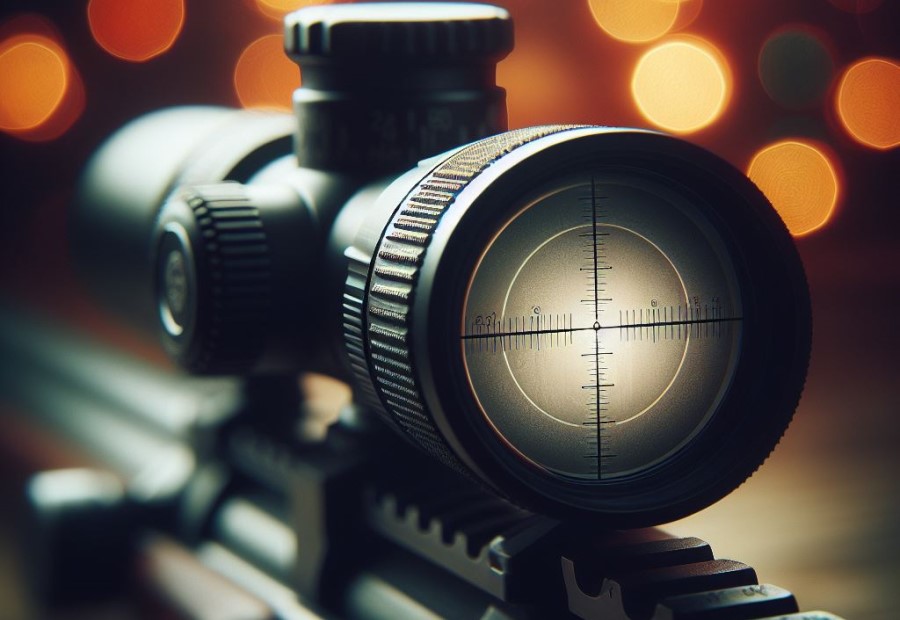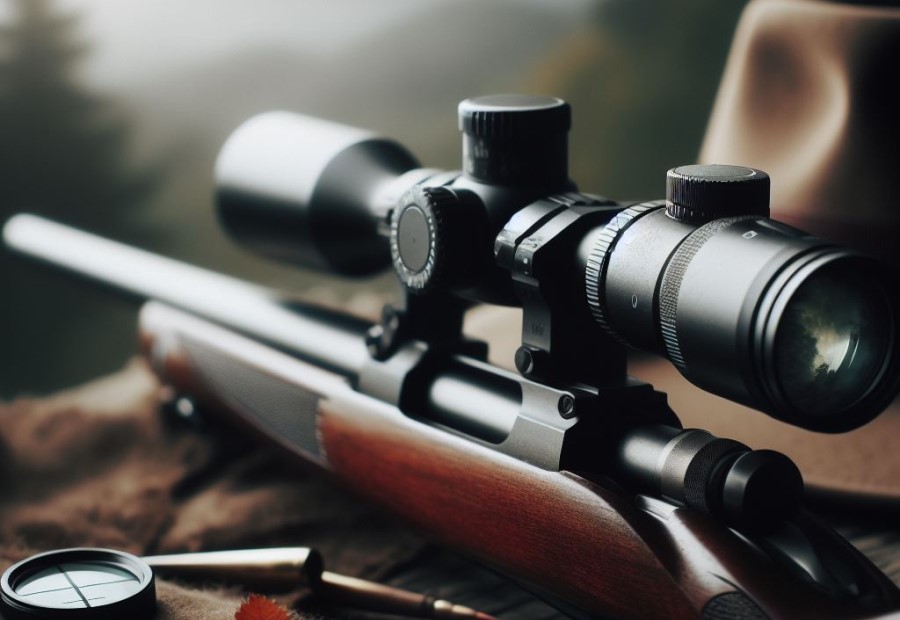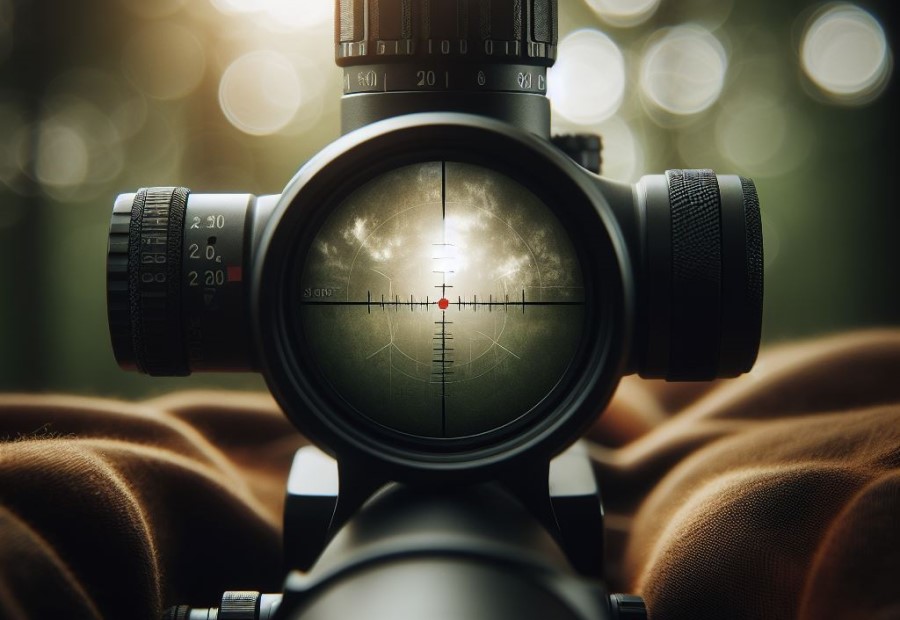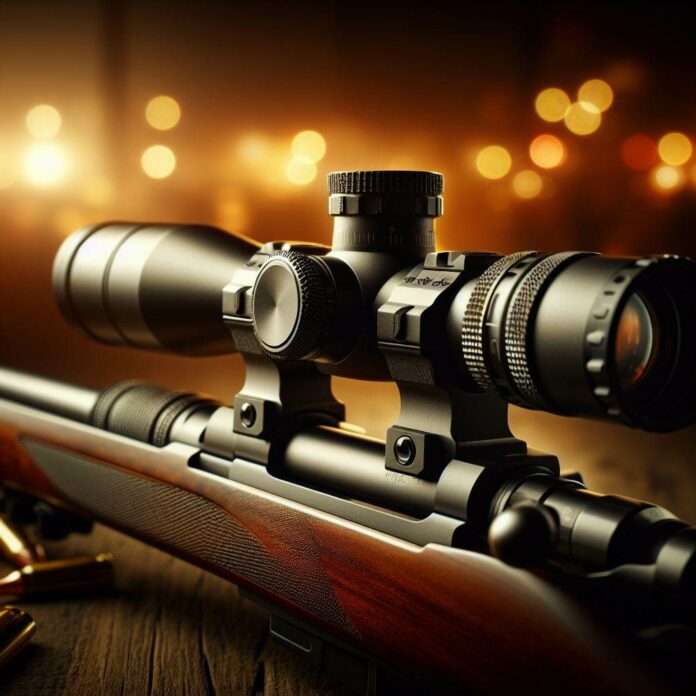Choosing the right scope for a .270 rifle is crucial for optimal accuracy and shooting performance. The scope you choose should align with the specific needs and shooting requirements of your rifle. Several factors need to be considered when selecting a suitable scope. These factors include magnification, objective lens size, reticle type, adjustability and turrets, durability and weatherproofing, as well as your budget range.
Understanding the ballistics of a .270 rifle is also essential in order to choose a scope that matches the rifle’s capabilities. This includes knowledge of factors such as bullet drop, wind drift, and recoil that affect shot placement.
Matching the specifications of the scope with the ballistics of the .270 rifle is crucial for accurate shooting. This can be achieved through features such as bullet drop compensation (BDC) reticles, mil-dot reticles, and dial-up turrets.
It’s important to consider the specific type of shooting you will be primarily engaged in, whether it’s hunting, target shooting, or long-range shooting. Each type of shooting may have different requirements and preferences when it comes to selecting a scope.
Proper mounting and zeroing of the scope on a .270 rifle is essential for achieving consistent and accurate shots. Following the necessary tips and techniques for mounting and zeroing the scope will ensure maximum performance.
By understanding the factors to consider, the ballistics of the .270 rifle, matching scope specifications, and considering the shooting type, you can confidently choose a scope that will enhance your shooting experience and maximize the potential of your .270 rifle.
Factors to Consider when Choosing a Scope for a .270 Rifle

When it comes to choosing a scope for your .270 rifle, there are several important factors to consider. From the magnification to the objective lens size, reticle type, adjustability, durability, and even the price range, each aspect plays a crucial role in finding the perfect scope.
So, let’s explore the world of scopes and equip your .270 rifle with the perfect optic companion.
Magnification
In the world of rifle scopes, magnification plays a crucial role in determining the effectiveness of your shots. The magnification range of a scope defines the range of zoom levels it offers, typically indicated by two numbers separated by a hyphen.
For example, a scope with a magnification range of 2-12x allows you to zoom from 2 times the normal view up to 12 times.
The ideal magnification for a .270 rifle would be around 6x. This provides a good balance between target identification and a wide field of view. However, the maximum magnification of the scope can go up to 12x, giving you enhanced accuracy and the ability to shoot at longer distances.
Higher magnification levels boost your ability to identify targets accurately, especially when shooting at longer ranges. On the other hand, it also narrows your field of view and reduces the depth of field, making it more challenging to spot targets in close proximity.
Lower magnification levels, like 2x or 4x, are useful for better situational awareness and a wide field of view. They allow you to quickly acquire targets and are beneficial for hunting scenarios.
When choosing a scope for your .270 rifle, consider the magnification range that suits your shooting needs. If you primarily engage in long-range shooting, a scope with higher magnification may be preferred. However, if you engage in hunting or other scenarios that require a broader view, a scope with lower magnification may be a better choice.
Remember, the key is to find the right balance between magnification and your specific shooting requirements to maximize the potential of your .270 rifle.
Objective Lens Size
The objective lens size is a crucial aspect to take into account when selecting a scope for a .270 rifle. It plays a significant role in determining the amount of light that enters the scope, directly impacting the brightness and clarity of the images observed.
Having a larger objective lens size allows for more light to enter the scope, resulting in brighter and clearer images. Nevertheless, it is important to consider that it also influences the dimensions and weight of the scope.
For a .270 rifle, an optimal objective lens size would range from 40-44 millimeters. This size provides a well-balanced combination of light gathering capability and a compact, manageable scope.
It is important to mention that while a larger objective lens size can enhance low-light performance, it might not be essential if you primarily engage in shooting during daylight or well-lit conditions. In such situations, a smaller objective lens size, such as 32-36 millimeters, can still offer excellent performance while being more compact and lightweight.
Ultimately, the objective lens size should be selected based on your shooting conditions and personal preferences. By considering the factors discussed above and evaluating your specific needs, you can choose the appropriate objective lens size for your .270 rifle scope.
Reticle Type
When choosing a .270 rifle scope, it’s important to consider the different types of reticles available. Each reticle type has its own advantages and purposes.
1. One popular reticle type is the Duplex Reticle. This type features thick outer posts and thinner crosshairs, allowing for quick target acquisition. It is suitable for general hunting and shooting scenarios.
2. Another option is the Mil-dot Reticle, which offers versatility. This reticle type allows for range estimation and windage adjustments. It consists of small dots placed along the crosshairs, providing precise aiming points at different distances.
3. For those looking for specific bullet drop compensation, the BDC Reticle is designed to do just that. It features multiple aiming points or hash marks below the crosshairs, ensuring accurate long-range shooting by compensating for bullet drop at varying distances.
4. Hunting during low-light conditions can be challenging, but an illuminated reticle can help. This type of reticle provides enhanced visibility with adjustable brightness levels. It is particularly beneficial during dawn or dusk hunts.
5. Precision shooting and long-range applications often call for tactical reticles such as the MOA or MRAD. These reticles are designed with precise markings and measurements for elevation and windage adjustments, offering superior accuracy.
Adjustability and Turrets
A scope with adjustable features allows for precise aiming and targeting. This includes adjustable magnification, which allows you to zoom in or out for different shooting distances. It also includes adjustable windage and elevation turrets, which enable you to correct for bullet drop and wind drift.
Turrets are the knobs or dials on the scope that control the adjustments mentioned above. Look for turrets that are easy to access and operate, with clear markings for adjustments. Turrets with positive click adjustments are preferred, as they provide a tactile and audible cue for each adjustment made.
By considering the adjustability and turret features, you can choose a scope that offers the necessary adjustability and turret features to enhance your shooting experience with a .270 rifle.
Durability and Weatherproofing
Durability and weatherproofing are crucial factors to consider when selecting a scope for a .270 rifle. It is essential for the scope to be capable of enduring harsh weather conditions and rough handling in outdoor environments.
The scope should be manufactured with high-quality materials that can withstand impacts, vibrations, and exposure to moisture. A scope that is durable will be more dependable and less likely to experience malfunctions during critical moments in the field.
Weatherproofing is equally as important as it ensures that the scope remains functional and accurate even in challenging weather conditions like rain, fog, or extreme temperatures. A weatherproof scope will possess features such as O-ring seals and nitrogen purging to prevent water, dust, and fog from entering the optical system.
This guarantees clear visibility and prevents distortion or damage to the internal components.
When making a choice for a scope, it is essential to take into account its durability and weatherproofing features. Look for scopes that are constructed using rugged materials like aircraft-grade aluminum and have a sealed design to provide protection against water and debris.
Additionally, verify the presence of features such as fog-proofing and shock resistance, which further enhance the scope’s durability and performance. By investing in a scope that is both durable and weatherproof, you can have confidence in its functionality and accuracy even under challenging shooting conditions.
Understanding the Ballistics of a .270 Rifle

Unlocking the secrets behind the ballistics of a .270 rifle, we embark on a thrilling journey into the world of precision marksmanship. Discover the wonders of Bullet Drop Compensation Reticles, Mil-dot Reticles, and the Dial-up Turrets as we explore the tools that enhance your accuracy.
With an expert eye, we unveil the crucial considerations for matching scope specifications with the .270 rifle’s extraordinary ballistics. Prepare to elevate your shooting prowess to new heights and hit the target with unprecedented precision.
Bullet Drop Compensation Reticles
When choosing a scope for a .270 rifle, opt for one that incorporates Bullet Drop Compensation (BDC) reticles. These reticles are designed to compensate for the bullet’s trajectory and the effect of gravity on its flight path. They have markings or dots that correspond to specific distances, allowing the shooter to adjust their aim for bullet drop at different ranges.
BDC reticles are usually calibrated for specific calibers and bullet weights, including the .270 cartridge. By using a BDC reticle, shooters can aim accurately at targets at various distances without the need for manual adjustments or external devices like ballistic calculators. Some BDC reticles also have windage compensation marks to help compensate for wind drift.
Experiment with different reticle designs and brands to find the one that suits your preferences and shooting style. This feature can significantly enhance your shooting experience by simplifying long-range aiming. Select a scope specifically calibrated for the .270 cartridge to ensure accurate bullet drop compensation. Happy shooting!
Mil-dot Reticles
- Mil-dot reticles offer a range-finding capability by using dots or hash marks on the reticle. Each dot or mark is equal to a specific measurement when viewed at a particular magnification.
- When using mil-dot reticles, it is important to understand the specific measurements and calculations associated with the reticle. Some scopes may have mil-dot reticles with different subtensions, so it is essential to familiarize yourself with the specific reticle you are using.
- Mil-dot reticles can be used to estimate the distance to a target by comparing the size of the target to the dots or marks on the reticle. This can be helpful for long-range shooting and hunting.
- Mil-dot reticles can also be used for holdover and wind correction. By knowing the approximate size of the target and the distance, shooters can make adjustments for bullet drop and wind drift.
- Mil-dot reticles are versatile and can be used with different types of ammunition and rifles. They can be especially useful for shooters who prefer to make precise shots at various distances.
Dial-up Turrets
The development and use of dial-up turrets in scopes can be traced back to military snipers in the early 20th century. These skilled marksmen required precise adjustments to compensate for bullet drop and windage at different distances.
Dial-up turrets are a crucial feature to consider when choosing a scope for a .270 rifle, as they allow for quick and precise adjustments to the elevation and windage settings. By adjusting the turrets, shooters can compensate for bullet drop and wind drift, ensuring accurate shots at varying distances.
When selecting a scope with dial-up turrets, it is important to look for ones that offer audible and tactile clicks for reliable adjustments without needing to take your eyes off the target. The development of dial-up turrets has evolved with advanced technologies, such as zero-stop systems and lockable dials, making them even more convenient and efficient.
Considerations for Different Types of Shooting

Hunting
When it comes to hunting with a .270 rifle, choosing the right scope is crucial. There are several factors that need to be considered in order to enhance the hunting experience and improve accuracy in the field. Here are some key considerations for selecting the perfect hunting scope:
1. Magnification: It is important to look for a scope with adjustable magnification. This will provide versatility in various hunting scenarios. A wide magnification range, like 3-9x, allows for both close and long-range shots.
2. Objective Lens Size: Opting for a larger objective lens can greatly improve visibility in low-light situations. The ability to gather more light is essential for successful hunting. Aim for an objective lens size of around 40-50mm.
3. Reticle Type: The choice of reticle depends on individual hunting needs. For quick target acquisition, a simple duplex reticle is commonly used by hunters.
4. Adjustability and Turrets: A good hunting scope should have easy and precise adjustment knobs and turrets. This enables quick zeroing and adjustments for windage and elevation during hunting.
5. Durability and Weatherproofing: A rugged and weatherproof scope is essential for withstanding the harsh elements of hunting. The scope should be able to endure rain, fog, and rough handling without compromising performance.
6. Price Range: Determine your budget and look for a scope that offers a balance between quality and affordability. It is advisable to consider reputable brands that are known for producing reliable scopes.
By taking these factors into consideration, hunters can choose a scope that meets their specific needs and enhances their hunting accuracy and success.
Target Shooting
When it comes to target shooting with a .270 rifle, there are several important factors to consider:
- Magnification: Target shooting requires a scope with adjustable magnification to zoom in and make precise shots.
- Objective Lens Size: Opt for a scope with a larger objective lens to gather more light and create a brighter, clearer image.
- Reticle Type: Choose a reticle that offers precise aiming points, like a fine crosshair or a BDC (Bullet Drop Compensation) reticle, to accurately compensate for bullet drop at different distances.
- Adjustability and Turrets: Find a scope with easy-to-use windage and elevation adjustment turrets for making precise adjustments and hitting the target accurately.
- Durability and Weatherproofing: To endure the rigors of target shooting and perform well in various weather conditions, select a rugged, shockproof, and waterproof scope.
- Price Range: Determine your budget and find a scope that offers a good balance of features and affordability for target shooting.
Fact: The .270 rifle is known for its excellent accuracy and flat trajectory, making it a popular choice for target shooting.
Long-Range Shooting
When it comes to long-range shooting, there are several important factors to consider:
- Choose the right scope: Look for a scope specifically designed for long-range shooting. It should have a high level of magnification, typically between 12x and 20x, to help you see your target clearly at long distances.
- Consider the objective lens size: A larger objective lens allows more light to enter the scope, resulting in a brighter and clearer image. Look for a scope with an objective lens size of at least 50mm.
- Opt for a reticle type: For long-range shooting, a reticle with bullet drop compensation (BDC) markings can be extremely useful. This allows you to adjust for the drop in the bullet’s trajectory over long distances without having to make manual calculations.
- Choose a scope with adjustability and turrets: Look for a scope that offers precise adjustment knobs or turrets for windage and elevation. This will allow you to make accurate adjustments for long-range shots.
- Ensure durability and weatherproofing: Long-range shooting often takes place in challenging conditions. Choose a scope that is rugged, shockproof, and waterproof to withstand the rigors of outdoor shooting.
For the best results in long-range shooting, it is essential to invest in a high-quality scope that meets your specific needs. Remember to consider the factors mentioned above and choose a scope that provides the features required for accurate and successful long-range shooting.
Tips for Mounting and Zeroing the Scope on a .270 Rifle
Here are some tips for mounting and zeroing the scope on a .270 rifle:
- Ensure the rifle is unloaded and remove the bolt.
- Place the rings on the scope and loosely tighten them onto the rifle’s receiver.
- Position the scope on the rifle and align it properly.
- Tighten the rings evenly using a torque wrench to avoid damaging the scope.
- Adjust the eye relief by moving the scope back and forth until you have a clear view.
- Level the scope using a bubble level on the top of the scope or a scope leveling tool.
- Securely tighten the rings to the specified torque value.
- Replace the bolt and ensure it cycles smoothly.
- Take your rifle to the range and set up a target at a suitable distance.
- Fire a shot and observe where the bullet hits in relation to the target.
- Make elevation and windage adjustments on the scope based on the bullet impact.
- Continue making adjustments and shooting until your bullet consistently hits the target.
Remember to take your time during the mounting and zeroing process to ensure accuracy and safety. Practice proper gun maintenance and follow all safety procedures while handling firearms.
Frequently Asked Questions
How do I choose a scope for a .270 rifle?
When choosing a scope for a .270 rifle, there are several factors to consider. First, consider the shooting range you intend to use the rifle for. For longer ranges of about 350 yards and up, a scope with a magnification of 8x and up is recommended.
For medium ranges of about 150-350 yards, a scope with a magnification of 4x to 8x is suitable. For close ranges of 150 yards or under, a scope with a magnification of 3x to 7x is recommended. Additionally, consider the optical quality, reticle pattern, turrets, and light transmission of the scope.
What are some top scope options for a .270 Winchester rifle?
Some top scope options for a .270 Winchester rifle include the Vortex Optics 3-9×40 Viper Riflescope, Vortex Optics Diamondback 4-12×40 Second Focal Plane Riflescope, and Simmons 8-Point 3-9x50mm Rifle Scope with Truplex Reticle. These scopes offer different features and price points but provide good quality and performance.
What makes the .270 Winchester caliber popular for big game hunting?
The .270 Winchester caliber is popular for big game hunting due to its flat shooting ballistics and knock-down power at longer distances. It is considered to be the most versatile big game cartridge on the market. It has mild to moderate recoil and is readily available, with almost every firearms manufacturer offering rifles chambered in .270 Winchester.
What are some affordable scope options for a .270 Winchester rifle?
Some affordable scope options for a .270 Winchester rifle include the Simmons 8-Point 3-9x50mm Rifle Scope with Truplex Reticle and Vortex Optics Diamondback Second Focal Plane 4-12 x 40 Riflescope. These scopes offer good quality and performance at a more budget-friendly price point.
What is the maximum effective range of a .270 cartridge?
The .270 cartridge is accurate up to a maximum of 500 yards. It is suitable for big game hunting and is known for its flat shooting ballistics. When choosing a scope for a .270 rifle, it is important to consider the shooting range you intend to use the rifle for and select a scope with appropriate magnification for that range.

